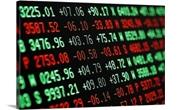Futures

US Shredded Steel Scrap Futures Trading Coming to Nasdaq
Written by Sandy Williams
March 7, 2016
World Steel Exchange Marketing (WSEM) announced that the US Shredded Steel Scrap TSI Index will begin futures trading on the Nasdaq Commodities Exchange (Stockholm) as of March 29, 2016.
The 20-gross-ton USA Midwest shredded steel contract will be listed, and quoted, for the current month and each of the next 11 months. The contract will settle on the 11th day of each month against the Midwest US Shredded Steel Scrap TSI Index price.
WESM said other Nasdaq ferrous futures products will also begin trading soon, including: Midwest US Hot-Rolled Coil, 62% FE Iron Ore CFR China, Australian exported Coking Coal, and ASEAN Hot-Rolled Coil.
Listing of these ferrous future products is expected to bring price hedging opportunities for a variety of industry groups. WESM says liquid ferrous future markets will:
• Create the ability to enter, exit and shift positions at low cost.
• Permit the protection of scrap processing margins through hedging.
• Allow steel mills and foundries to lock in feedstock cost.
• Offer forward price information to demolition contractors which will help them to bid on jobs with less risk.
• Provide a financial tool for building contractors to stabilize the cost of rebar over the life of the project.
• Give access to traders outside the steel industry, whose activity adds to liquidity and narrows bid/ask spreads.
• Provide a financial tool to hedge inventory values, protecting companies from unexpected price changes and improve borrowing rates against that inventory.
• Offer a financial instrument whereby anyone who thinks that the futures price is too high, or too low, can profit from their opinion.
• Position a company to better survive severe price swings.
WESM expects a quick ramp-up of steel scrap trading activity and, once broadly accepted, significant shredded futures volume due to the size of the physical market and the contract’s broad-based applications.
“U.S. shredded steel futures should become the “anchor product” in the ferrous futures complex, i.e. its success and growing liquidity should encourage and support futures trading across the entire steelmakers’ metallics spectrum,” said WESM CEO Peter Marcus.
Said Marcus in an email announcement of the scrap futures trading:
“World Steel Dynamics estimates that the size of the non-Chinese steel scrap and finished steel product market tied to steel scrap prices is roughly 460 million tonnes as follows: a) 60-70 million tonnes generated per year in the USA; b) about 90 million tonnes of steel scrap that’s traded globally; and c) 300 million tonnes for long and flat steel products whose price is strongly influenced by changes in the price of steel scrap. The 460 million tonne market does not include: a) potential transactions for middle-man companies and others along the supply chain; b) those engaged in hedges based on the spreads in price between steel scrap and related products; and c) those seeking to hedge their common stock holdings in steel and raw materials companies with a position in shredded scrap futures.”
WESM says it conservatively projects a 10X multiple for US Shredded Steel Scrap Futures within three to five years, with a potential to exceed that amount depending on financial trading support. “At a 10X multiple of 460 million tonnes and 20 tonnes per contract, this amounts to 230 million futures contracts.”
WESM has an agreement with Nasdaq Commodities to promote and support the growth of US Shredded Steel Futures through marketing, information, and commentary. The support teams will come from WSEM and WSD and include Peter Marcus (WSD’s managing partner); John Conheeney (President of WSEM and involved in futures trading for 30 years); Mike Marley (expert steel scrap commentator); Bob Mateer (flat-rolled steel prices consultant) and Dave Wonkovich (veteran steel scrap broker/trader).
On the first day of trading WESM seeks to have five to 10 steel scrap processors ready to post bids and offers as well as three market makers providing bid/ask spreads in the first three trading months. Of those market makers, at least one of them will make markets for each month along the 12-month curve.

Sandy Williams
Read more from Sandy WilliamsLatest in Futures

HR Futures: Summertime blues
Coming out of the holiday market and long weekend, it seems the HRC futures market has caught some post-vacation blues.

HR Futures: Financial players bullish on price, physical market participants not
We can interpret that managed money still has expectations of price strength while physical participants are running closer to a balance on a net basis.

HR Futures: Oil, Mideast tensions fail to move steel
After a hot start to June, the CME ferrous derivatives complex has cooled down.

HRC Futures: Could oil, ag price spikes drive steel higher too?
Could we see an abrupt shift now that oil prices have spiked higher? Will we see a rebound in the rig count? Will this create a snap-loading effect (think waterski rope), where the industry suddenly does a 180-degree turn? If so, will that bring with it increased demand for steel products used by the energy industry?

Flack: HR futures still on a wild ride
Never a dull moment in today's HR futures market.
